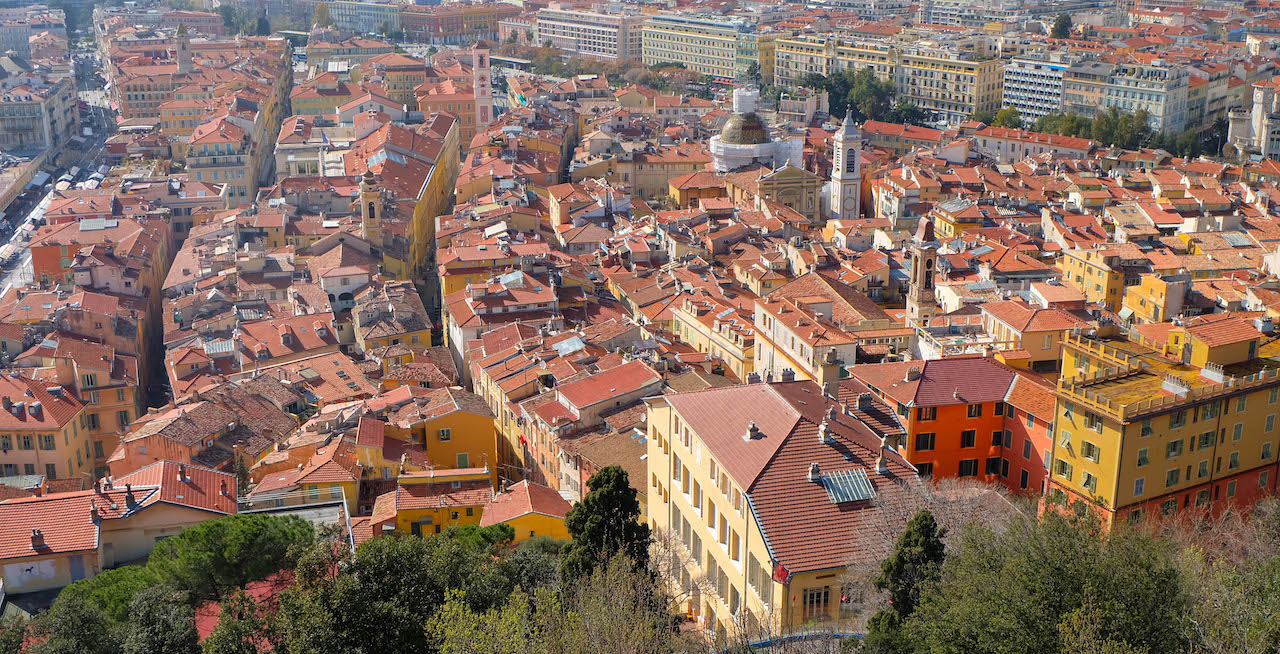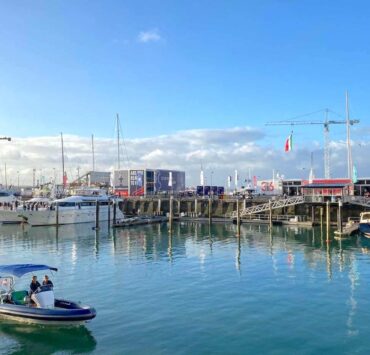What to do, where to go in Nice, and what are the city’s best secrets? Long-time resident and Filipino expat Francine Vito shows you how to best enjoy when you travel to Nice, the more laidback cousins of the French Riviera’s Saint-Tropez and Cannes.
There’s living, and there’s the art of living well. If you’re looking for the French art de vivre, year-round sunshine, and Mediterranean charm, look no further than Nice. If you arrive by plane and you’re lucky enough to have a window seat, be sure to look out. The Bay of Angels curves along the Promenade des Anglais, drawing you in with explosion of turquoise blue waters dotted with palm trees on the beach. But that’s just the appetizer. In 2021, Nice earned UNESCO Heritage status, a designation reserved for places of “exceptional interest for the common heritage of mankind”. So what makes Nice so exceptional?
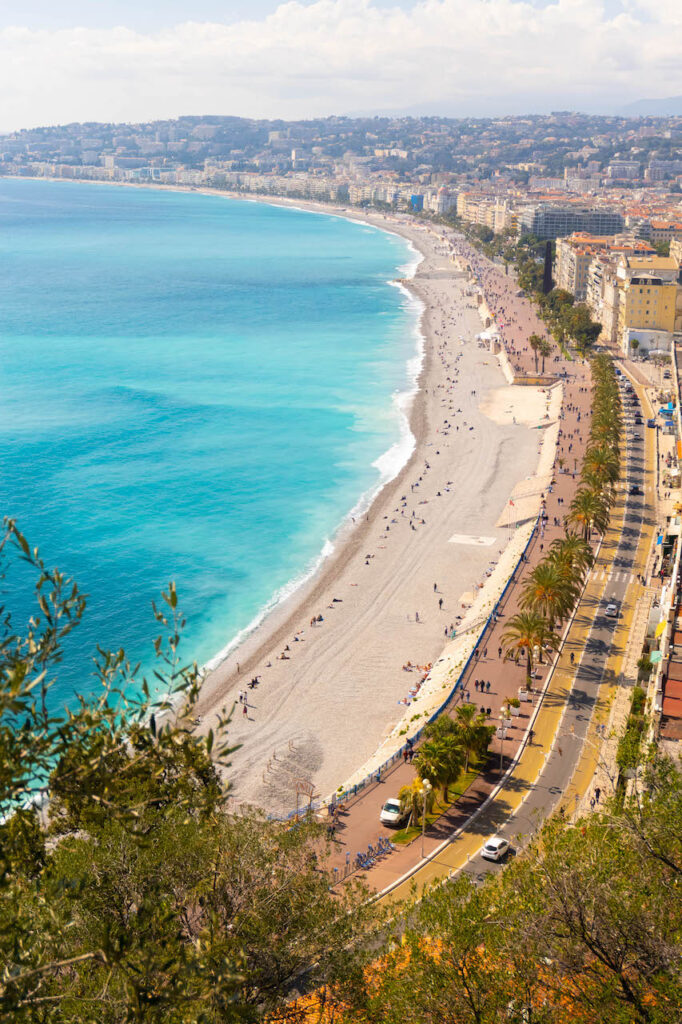
Year-round sunshine and winter ocean dips aside, there are many more reasons to visit Nice. Nice is in the heart of the Alpes-Maritime department, sandwiched between the Mediterranean Sea and the Alps. An hour’s drive from the sunny coast takes you up the hinterlands or the “arrière-pays niçois”, where you’ll find countryside villages, the rugged nature of the majestic Mercantour National Park, and ski slopes.
Travel to a colorful city
Nice’s rich and long history goes all the way to 350 B.C., marked by the arrival of early Greek settlers and notable episodes such as Turkish raids, wars, and centuries of Italian rule. The spirit of the Belle Epoch and Roaring 20’s have also left an indelible mark on its architecture. The Belle Epoch (1860 to 1914), “The Beautiful Age”, transformed Nice from a sleepy, coastal village that made money from salt imports into a tourism powerhouse. Queen Victoria of England and King Leopold of Belgium were among the first wave of aristocratic visitors who came to escape the cold, gray winters in their countries. The second wave, the bourgeoise winter-escapists, had wealth to flaunt and cash to spare, allowing the best architects and designers free rein to build grand mansions and palaces of eclectic designs and aesthetics. Many of these architectural gems in jewel tone colors still exist and are open to the public as museums.
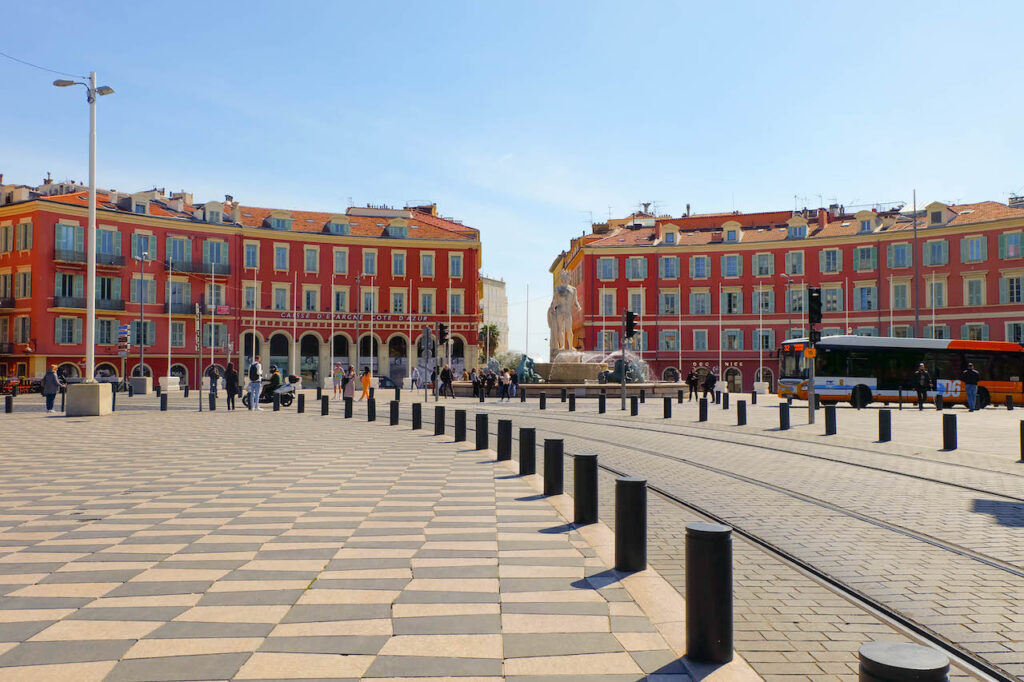
What to Do in Nice
Nice feels like a happy medium between an island resort and a city, with a vibe that’s much more laidback than other big French cities. It’s walkable and many attractions are conveniently located next to each other. You can visit all the top landmarks in one day by starting your walk from the picturesque Port Lympia and heading towards the Promenade des Anglais. Stop by the Marché aux Puces, a flea market selling vintage French goods and antiques. Stay on the walking path and you’ll pass by the giant “I Love Nice” sign to your left. Proceed further down, cross the street and look for the stairs or the elevator to go up to Castle Hill, a sprawling park with an artificial waterfall, ruins of a chateau, and show-stopping panoramic views of the ocean and city.
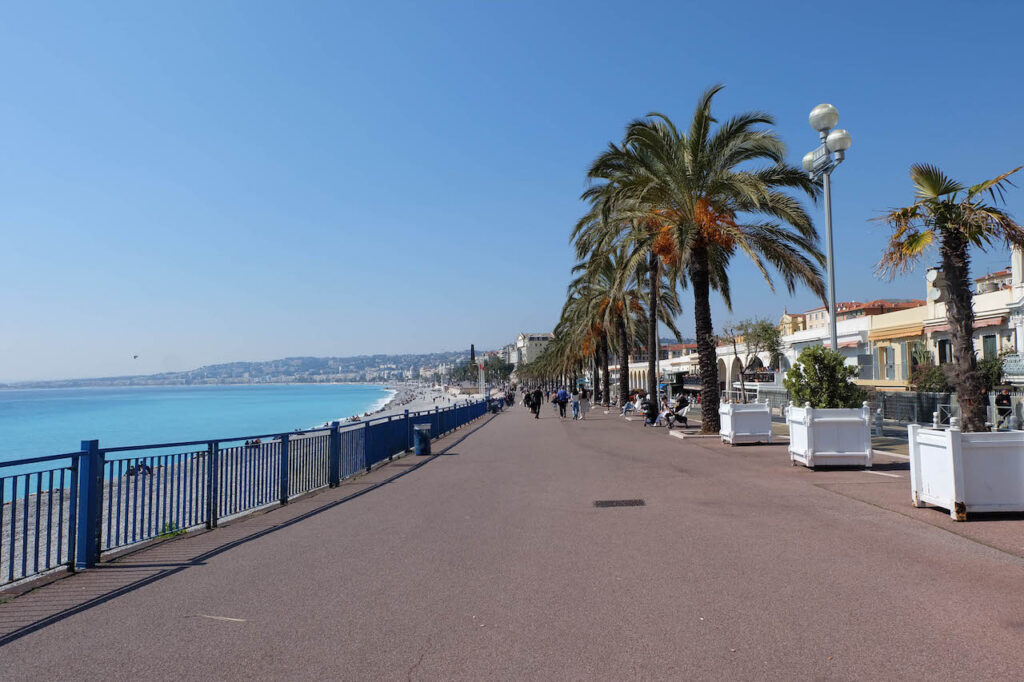
The iconic Promenade des Anglais, a 7 km stretch of pedestrian walking area, is a favorite spot for locals and visitors. You can walk, jog, or simply relax on one the benches on The Prom. The beach runs parallel to the Promenade des Anglais and can be accessed through several access points, so think of having your swimming attire ready in case the ocean gets too tempting. The white-gray pebble shore is also popular refuge for sun worshippers, readers, picnickers, or those wanting to have a front-row view of the ocean and sky.
Discover the Heart of Nice
Anthony Bourdain said that markets are a fast track into a country’s psyche. Nice’s old town or “Vieux Nice” is home to several markets and is a hotbed of commercial and culinary activity. Let your senses guide you through the maze of narrow rues and even narrower ruelles to discover all sorts of surprises between the old pastel buildings.
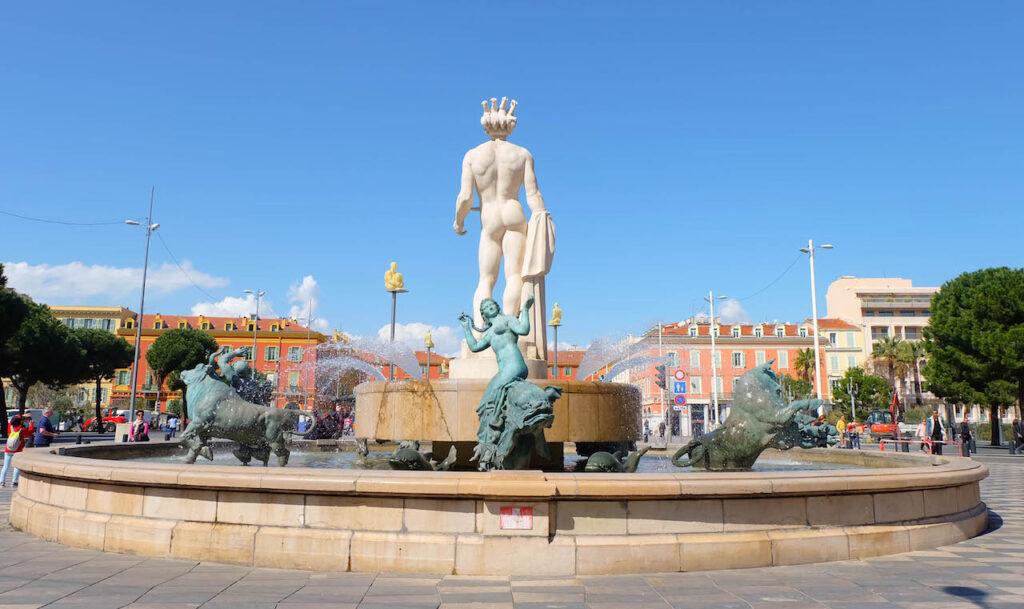
The Cours Saleya turns into a brocante or flea market every Monday. In the summer, the old town’s streets and plazas overflow with tables, with waiters ferrying trays of the plat du jour and glasses of wine from kitchens to hungry diners. Street musicians make the rounds with renditions of French classics and enthusiastic instrument playing.
Check out the knife-wielding fishmongers and butchers in St Francois square. Food artisans are on standby with samples of olive oil, cheese, cured meats, and vegetables brined in jars. Lavender and floral notes from perfumers waft between food smells. Gift shops sell postcards, magnets, and other trinkets. The Cours Saleya is the city’s best-known market, with its red and yellow striped awnings sheltering local plants and bright colored flowers, spices, food delicacies, and souvenirs.
On one end of Vieux Nice, you’ll find the historic Place Massena, recognizable with its fiery red facade, black and white tiled floors, and the imposing fountain and statue of Apollo. On the other end of Vieux-Nice is another plaza, Garibaldi Square, the oldest of the main squares in Nice. It’s a great place to observe people coming and going while you have an espresso or apéro in one of the cafés surrounding the square. If there’s one thing you’ll notice while flaneuring through the old town, it’s that people here know the art of living well.

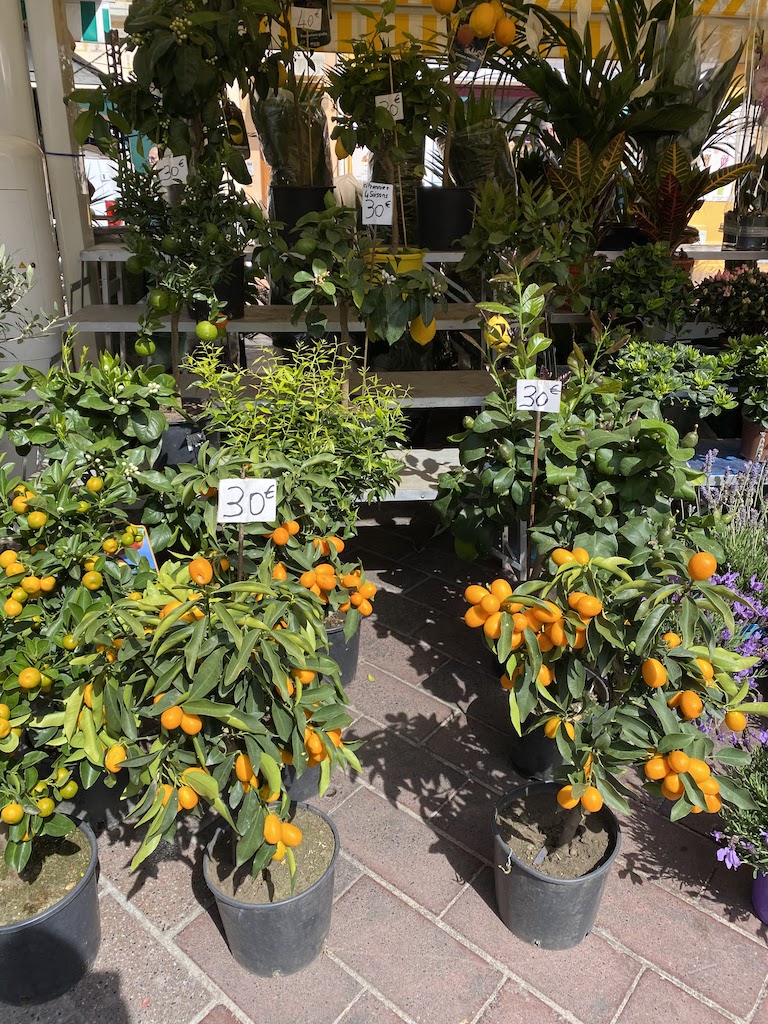
Eat Like a Nicois
One of the greatest pleasures of traveling is sampling the local culinary delights. Food in the south is a stark contrast to the stereotypical French cuisine. The fat of choice here is olive oil, not butter. Nice’s proximity to Italy and North Africa can be tasted through its cuisine and vegetables like eggplants, bell peppers, zucchini, and olives are staples. Nicoise salad and ratatouille, possibly the only heart-friendly French dishes, are from the city. Other uniquely Nicoise street food specialties you shouldn’t miss out on are socca, pissaladière, and pain bagnat. Socca is a grilled, golden flatbread made of chickpea flour. This savory treat is crusty on the outside and soft on the inside. It’s often served on paper cones and is a great snack to-go. Pissaladière is a sort of pizza topped with a bed of caramelized onions, softly cooked to perfection and sprinkled with either olives or anchovies. There are several stalls serving socca and pissaladière in Vieux Nice, but Chez Theresa’s is one of the best, well-loved by both tourists and locals. For something more filling, hunt for farcis nicois, bite-sized baked vegetables stuffed with meat filling. Pain bagna is an interesting cross-breed of sandwich-style burger and tuna salad. Do as the locals do and douse the inside of your pain bagna with olive oil before devouring. For the best authentic Nicois dishes, head to Lu Fran-Calin, La Taula, or Chez Acchiardo, all located in Vieux Nice.
Do what the French do: prepare a picnic. Pick up a bottle of rosé or a Bière de Comté Nissa and some fromage from the supermarché. Grab some local specialties and choose your picnic spot


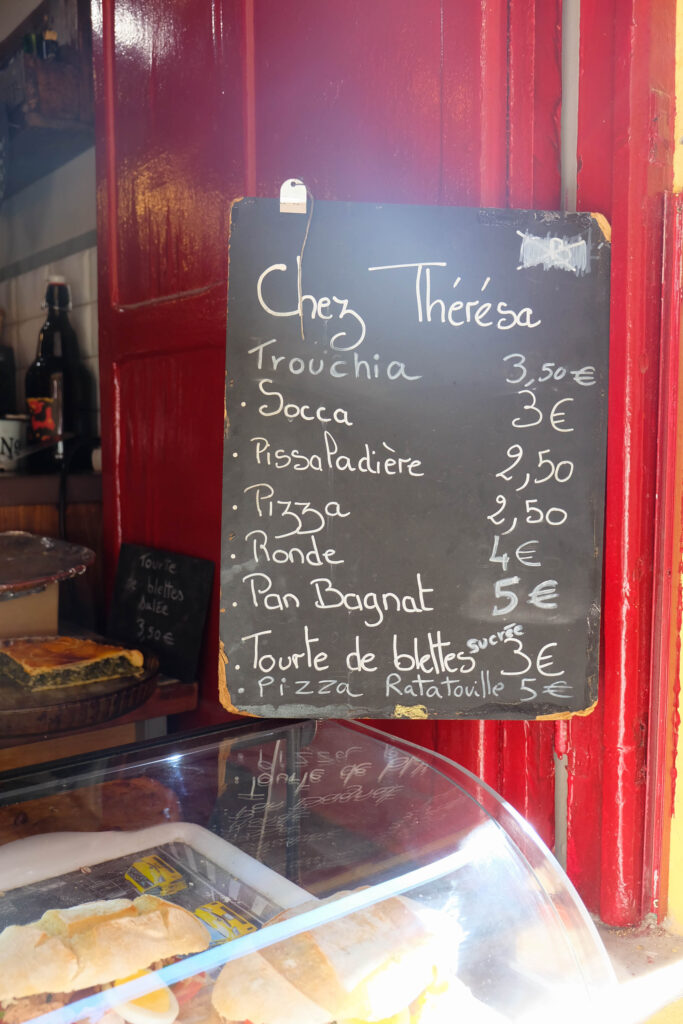
Too crowded in the restaurants? Do what the French do: prepare a picnic. Pick up a bottle of rosé or a Bière de Comté Nissa and some fromage from the supermarché. Grab some local specialties and choose your picnic spot. Castle Hill, Jardin des Arenes de Cimiez, Parc du Mont Boron, and Promenade du Paillon are all calm parks where you can eat in breezy, shaded areas among trees. For the ultimate summer vibe, take your picnic on the beach!
Nice’s arts and architecture
Art and architecture often go hand in hand in Nice. The Jules Chéret Museum of Fine Arts, formerly a private mansion owned by a Russian princess, is worth a visit for its stunning facade, interiors, and artwork spanning five centuries. Learn about the city’s most important historical figures and events at Musee Masséna, a 19th-century villa with sumptuous interiors. Modern art lovers shouldn’t miss the Marc Chagall Museum and the Museum of Modern and Contemporary Art. The Matisse Museum has the largest collection of works by Henri Matisse, widely considered the greatest colorist of the 20th century. The Palais Lascaris, a great example of Nice’s Baroque period, is currently a museum for ancient musical instruments.
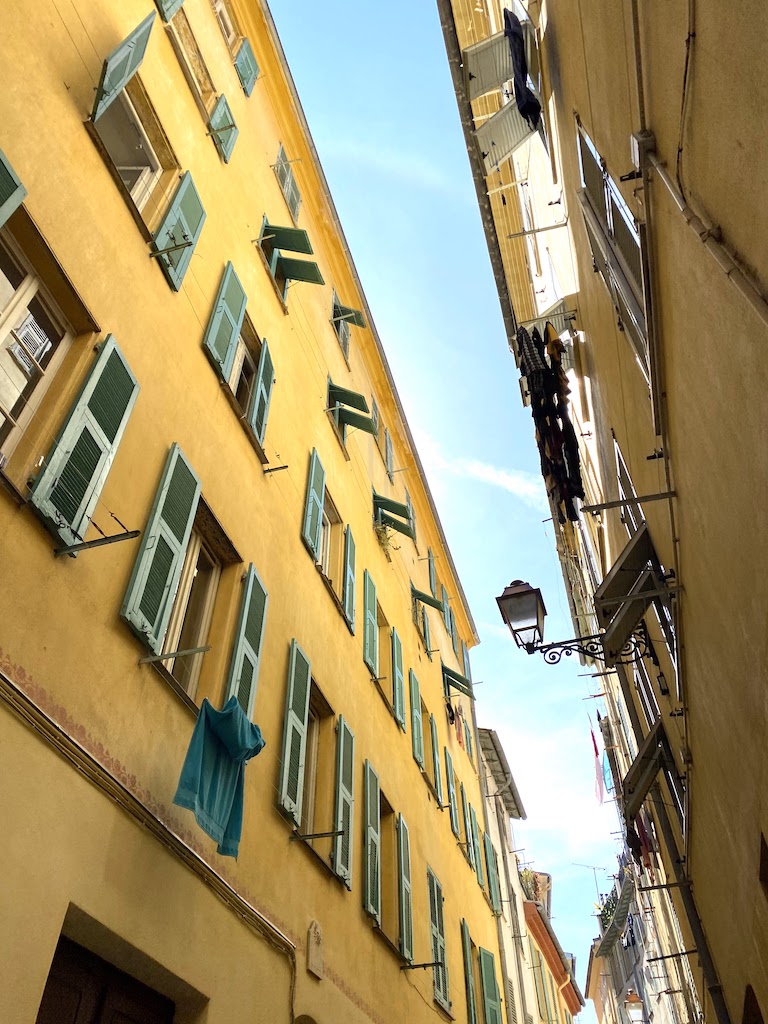
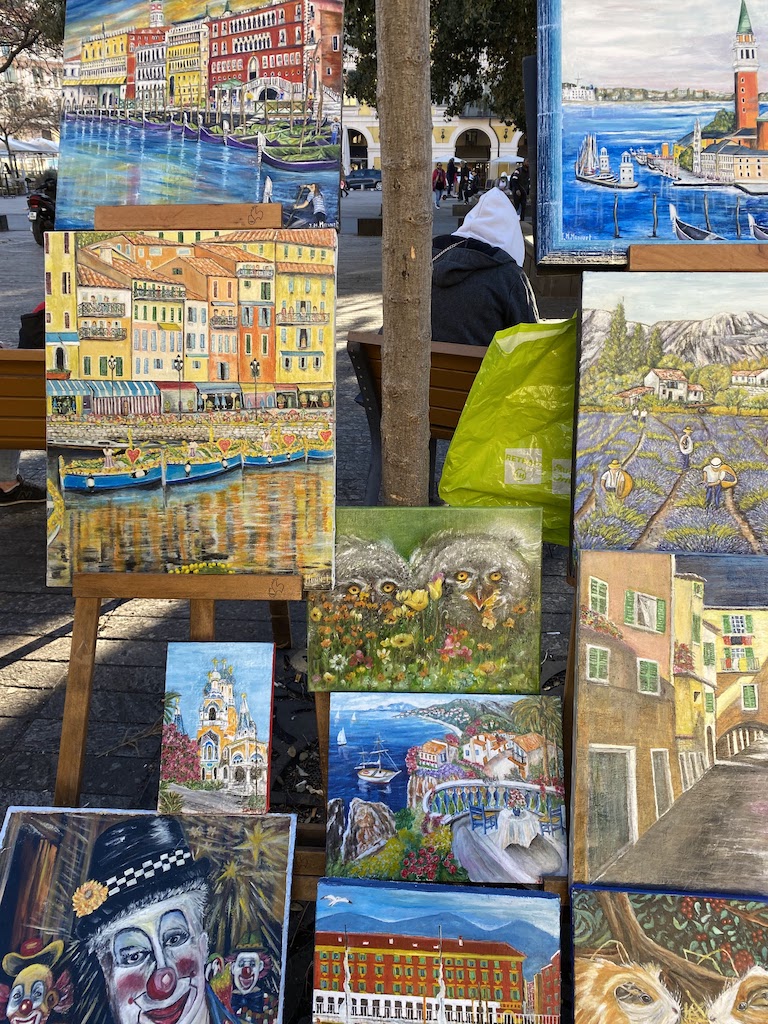
Day trips from Nice
For easy day trips, Saint Jean Cap Ferrat and Eze-sur-mer are lovely seaside towns that are both less than 30 minutes by train. Do the Tour of Saint Jean Cap Ferrat, a coastal walk with spectacular views that goes around the entire peninsula of Cap Ferrat. Stop by the Villa Ephrussi de Rothschild, a pink Belle Epoch mansion on a hill overlooking the sea. It has seven lush gardens, a museum, and a tea room. In Eze, take a tour around the old medieval village perched above the sea. Walk the Sentier de Nietzche, a hiking trail that rewards you with beautiful views of the Cote d’Azur. You might even find creative inspiration here just like Friedrich Nietzsche did!
Its warmth and beauty invites you to stop, slow down, and admire what’s around you.
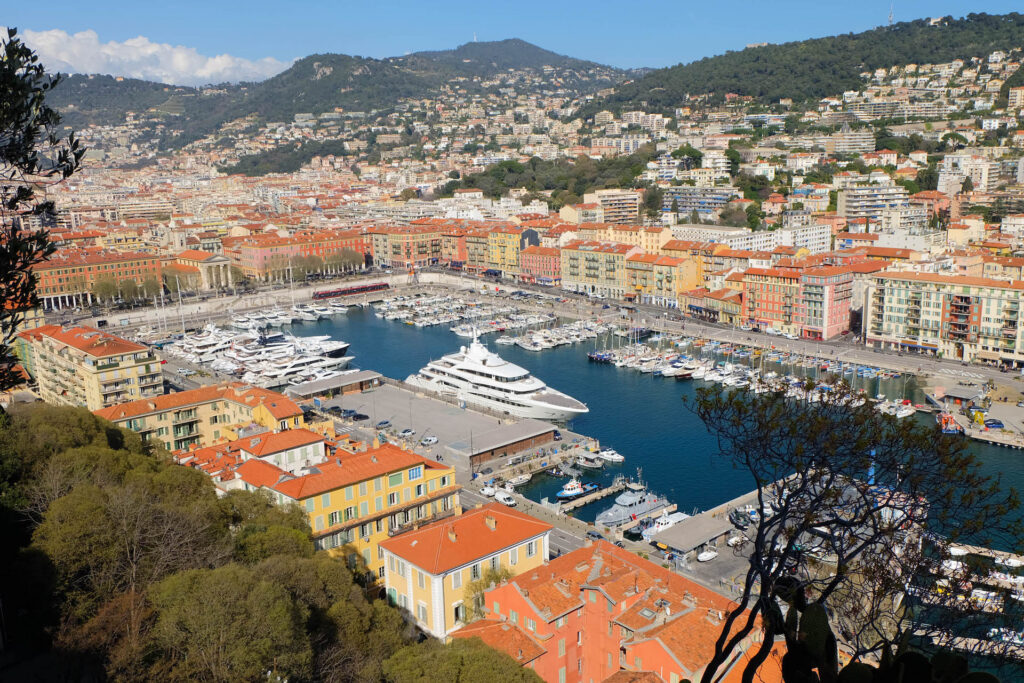
When to Go
The summer months of June to August are the best for swimming and ocean activities, but prepare to jostle for beach space and restaurant tables. Spring is a great time to visit as there are fewer people, the weather starts to warm up, and you’ll be in time to catch the colorful blooms and exotic plants in their full glory. There are many musical events and open-air markets during spring and summer. If you’re looking to ski, visit during fall and winter It’s also calmer during these off-season times and you get to see more of the laid-back, local culture without crowds of tourists.
Transport around Nice
To save on transportation costs, get a Lignes d’Azur 10 Voyages travel pass from tram stations or at a tabac. The pass allows you to take the city trams and buses, some of which even allow you to go beyond the city’s limits. Download the Lignes d’Azur app to check out bus routes and schedules.
Culture tips
In France, a bit of politeness and effort to speak the language is greatly appreciated. It’s common practice to greet the staff with a “Bonjour” when you enter a restaurant or shop and “Merci, Au revoir” when you leave.
Unsurprisingly, many great artists and writers have found inspiration in Nice. Its warmth and beauty invites you to stop, slow down, and admire what’s around you. The jewel of the Mediterranean continues to be a true feast for the senses of visitors today.

